ALL about Chamomile
Ahhhh, Chamomile! This lovely plant adds cute little daisy-like flowers to your herbal tea garden ... and a soothing, apple-y flavor to your cup!
What's On This Page?
(Click any link to jump straight to that section)
Chamomile Basics
|
Varieties Used for Tea: German (annual), Roman (perennial) Hardy To: -20°F / -29°C |
Space Required: 12 in. / 30 cm. Grow in Containers: Yes Grow Indoors: Yes |
[ Go back to "What's on This Page" menu ]
Chamomile Varieties
The most common varieties of the chamomile herb are:
- German (matricaria recutita), and
- Roman (chamaemelum nobile)
Both varieties make delicious tea, either alone or combined with other herbs to create your favorite custom blends.
German Chamomile
Easy to grow from seed, this no-fuss plant is perfect for first-time herbal tea gardeners.
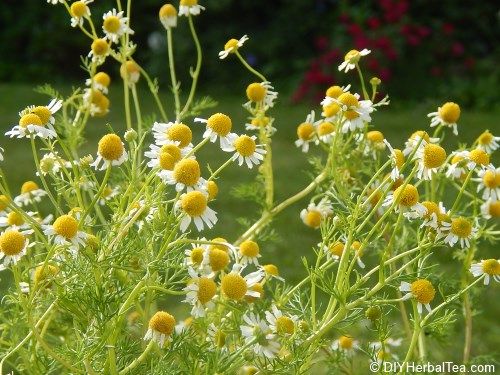 All This Chamomile From One Packet of Seeds!
All This Chamomile From One Packet of Seeds!
Characteristics: Annual. Long, "leggy", multi-branched stems with sparse, feathery foliage, topped by a daisy-like flower.
Cultivation: Seed or starter plant. Sow seeds in early spring for same-year bloom. Sow in late autumn for next-year flowering. After this herb is established in the garden, it's a prolific self-seeder.
Growing Conditions: Average soil, full sun. Can tolerate a little drought, but blooms best when the soil is kept evenly moist (not water-logged!).
Bloom Time: Early summer to first frost.
Average Height: 12-18 in. / 30-46 cm.
Parts Used for Tea: Blossoms
Taste: Light, apple-y flavor with a hint of pineapple.
Roman Chamomile
Also commonly known as "English Chamomile", this variety makes a resilient, aromatic ground cover - as well as a tasty tea.
FYI: This herb is a tough little perennial! My Roman Chamomile has been run over by a delivery truck, mistakenly mowed down by my hubby, and tromped on by a neighbor's dog. Desipte all the mishaps, it's always bounced back quickly. :-)
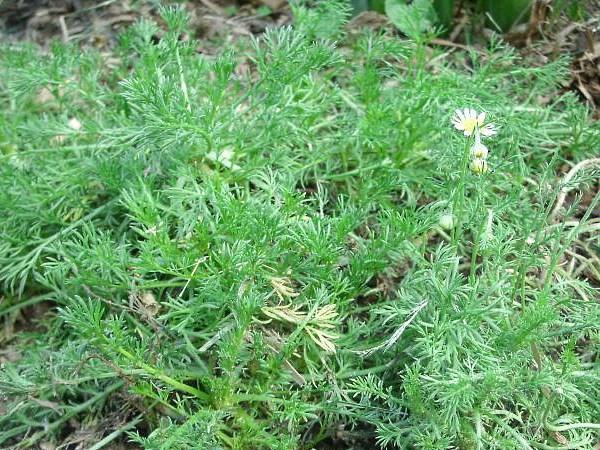 Roman Chamomile Beginning to Spread
Roman Chamomile Beginning to SpreadCharacteristics: Perennial. Hardy to -20° F (-29° C). Low-growing, with wispy leaves and small, daisy-like flowers. Unlike the German variety whose scent is primarily in the blossoms, Roman Chamomile's leaves are aromatic, too. They give off a spicy apple fragrance when pinched, stepped on, or clipped by that wayward lawn mower ;-)
Cultivation: Seeds, starter plant, or division from a well-established plant. Because the seeds are somewhat slow to germinate, I recommend starting with a plant rather than seeds. Once established, the Roman Chamomile plant's stems creep along the ground, rooting and spreading.
Growing Conditions: Full sun to part shade. Average, well-draining soil. Should be kept evenly moist. Can tolerate short dry spells.
Bloom Time: Early summer to late autumn.
Average Height: 3-12 in. / 8-30 cm.
Parts Used for Tea: Blossoms
Flavor: Delicate, apple flavor. To my taste buds, tea made from the Roman variety isn't quite as light and sweet as tea made from the German variety. Your taste buds might disagree, so try both chamomile teas and compare for yourself.
[ Go back to "What's on This Page" menu ]
invasiveness
Is the chamomile plant invasive? It can be, if you leave it to its own devices!
Roman chamomile is a low-to-the-ground, trailing herb that primarily spreads by its runners taking root as they crawl across the soil. Keep the runners cut back to control the plant's spread.
German chamomile multiplies by re-seeding. To keep this variety of chamomile in check, harvest the blossoms before they turn brown and start dropping their seeds.
[ Go back to "What's on This Page" menu ]
disease & pest resistance
Although it looks so delicate in the garden, chamomile is actually a very resilient herb. It rarely succumbs to disease, and most critters tend to ignore it.
I say "most critters", because I've noticed the bunnies in my yard occasionally nip off some low-hanging chamomile blossoms. I'm okay with that. When the plant is in full bloom, there's plenty to go around. ;-)
Benefits of Chamomile
For centuries, chamomile has been touted as a mild sedative. I'm not sure if there's any scientific proof of chamomile's calming effects. But I can tell you, it sure works for me!
When I'm stressed or tossing-and-turning trying to fall asleep, a warm cup of chamomile tea always does the trick.
 Chamomile Tea & Cookies
Chamomile Tea & Cookies(The Cookies Help Me Relax, Too!)
It's a good tea for soothing an upset tummy or a scratchy throat, too.
Are you plagued by sinus congestion or a stuffy nose? Just simmer a handful of chamomile in a small pan of water and inhale the warm (not hot!!!) steam.
Chamomile Allergies & Side Effects*
People with a sensitivity to ragweed or other pollens may be more prone to suffer an allergic reaction to chamomile.
If you have any health issues, or if you're taking any prescription medications or over-the-counter supplements, be sure to check with your medical care provider about possible interactions and side effects before you drink chamomile tea.
Ladies who are pregnant or breast-feeding shouldn't use chamomile without a doctor's permission. And always get the pediatrician's approval before allowing an infant or young child to taste your camomile tea or inhale its vapors!
* More about chamomile allergies, side effects & drug interactions
[ Go back to "What's on This Page" menu ]
more about chamomile ...

- Home ›
- All About Chamomile
If you enjoyed this article and found it helpful, please click the "Like" button to let me know. Thanks!

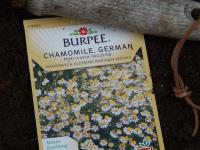
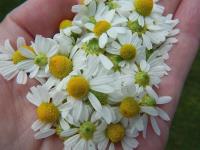
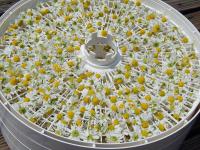
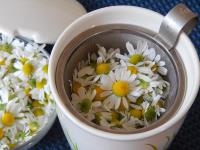
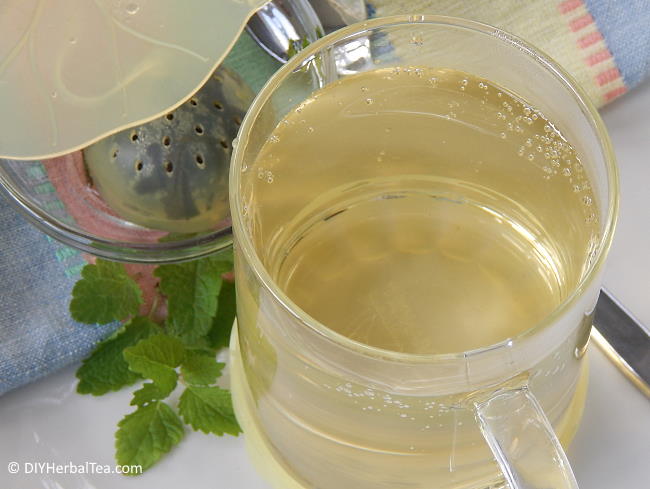
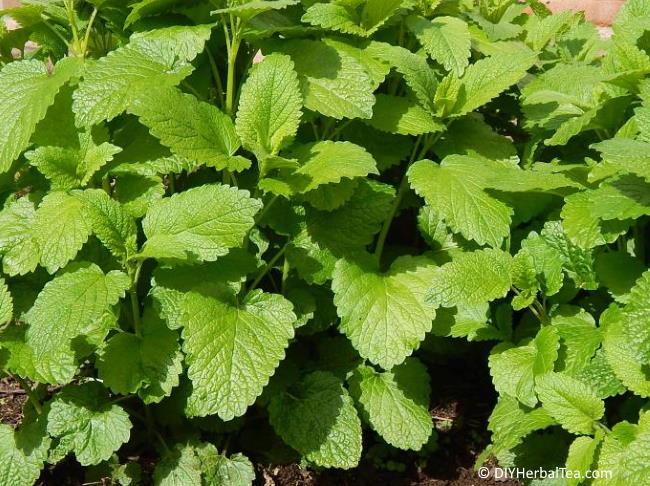
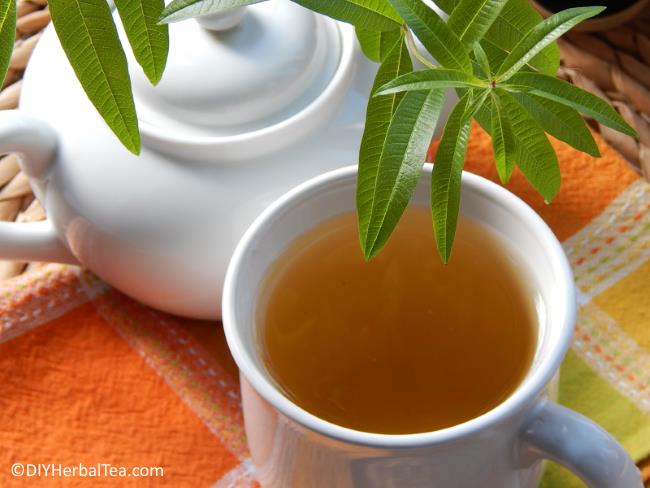
New! Comments
Feel free to leave me a comment in the box below!